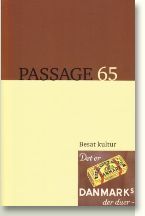At skrive fra torturbødlens stol. Om forfatterens valg og metoder i Gaute Heivolls "Himmelarkivet"
DOI:
https://doi.org/10.7146/pas.v26i65.6387Resumé
Nora Simonhjell: “Writing From the Chair of the Torturer”
The Norwegian author Gaute Heivolls novel Himmelarkivet [The Archive in Heaven], is both a documentary novel and a reflection upon the creative writing process itself. In January 1945 Louis Hogganvik was arrested by the Gestapo. He was tortured, and ended up comitting suicide. Hogganvik’s destiny has been silenced both in the family history and in the local community, until Heivoll started to write this novel. At one point he is back in the torture chamber, and ends up sitting in the same chair as the man in charge for the torture. How does this bodily repetition affect the contemporary young author’s narrative strategies?
Downloads
Publiceret
Citation/Eksport
Nummer
Sektion
Licens
Forfattere, der publicerer deres værker via dette tidsskrift, accepterer følgende vilkår:
- Forfattere bevarer deres ophavsret og giver tidsskriftet ret til første publicering, samtidigt med at værket efter publiceringen er omfattet af en Creative Commons Attribution-licens, der giver andre ret til at dele værket med en anerkendelse af værkets forfatter og første publicering i nærværende tidsskrift.
- Forfattere kan indgå flere separate kontraktlige aftaler om ikke-eksklusiv distribution af tidsskriftets publicerede version af værket (f.eks. sende det til et institutionslager eller udgive det i en bog), med en anerkendelse af værkets første publicering i nærværende tidsskrift.
- Forfattere har ret til og opfordres til at publicere deres værker online (f.eks. i institutionslagre eller på deres websted) forud for og under manuskriptprocessen, da dette kan føre til produktive udvekslinger, samt tidligere og større citater fra publicerede værker (se The Effect of Open Access).





